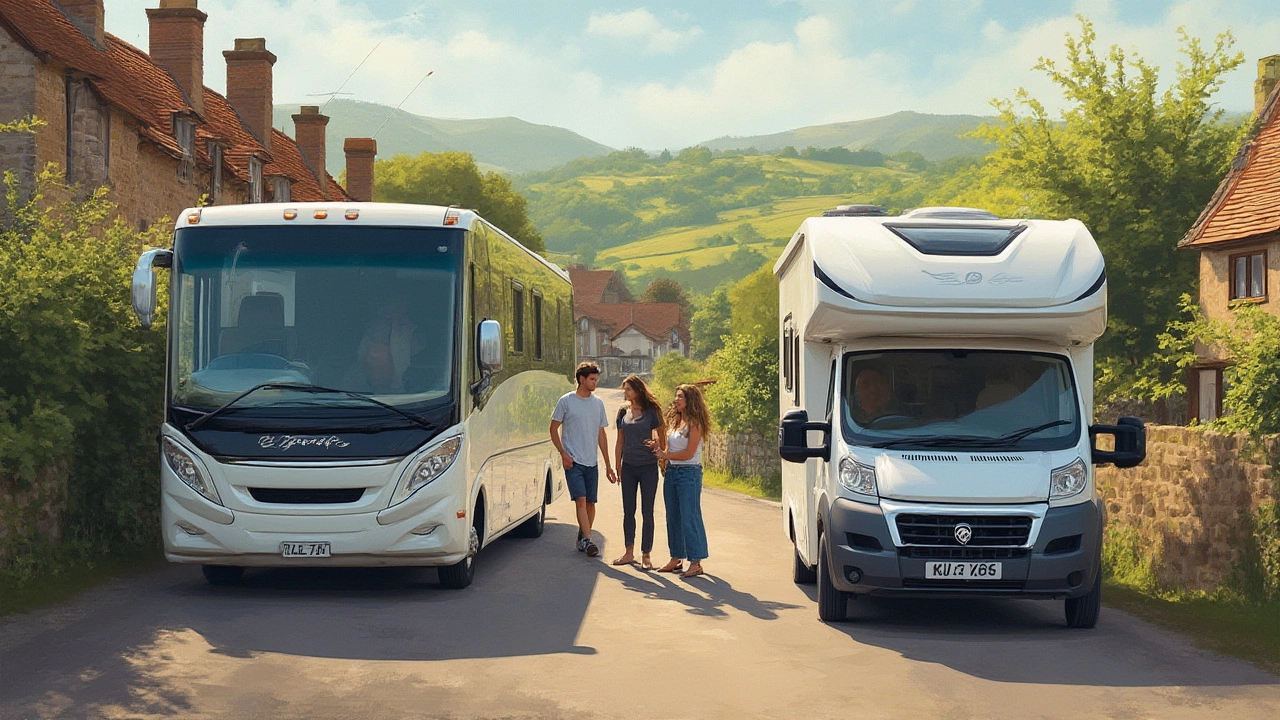Class C Motorhome – What You Need to Know Before You Hire
If you’re thinking about a motorhome that feels like a small house on wheels, the Class C is a solid pick. It sits on a truck chassis, so it drives like a big van but gives you more living space than a typical camper van. That extra height means standing up inside is easy, and the slide‑out bedroom creates a comfy sleeping area without cramping the living space.
Key Features of a Class C Motorhome
First up, the layout. Most Class C models have a front cab, a middle lounge with a sofa that turns into a bed, and a rear bedroom that slides out when you park. The kitchen usually includes a sink, two‑burner hob, and a small fridge – enough for simple meals on the road. A bathroom with a shower and toilet is standard, so you won’t need to hunt for public facilities every few hours.
Because it’s built on a truck frame, a Class C can handle heavier loads. You can load a bike rack, a kayak, or a few extra suitcases without stressing the vehicle. The driving position feels familiar – a steering wheel, gear stick, and a good view of the road, which makes it less intimidating for newcomers.
Fuel efficiency isn’t as high as a camper van, but it’s better than a full‑size RV. Expect around 12‑15 mpg for a 3‑tonne model. Most UK hire companies offer models with LPG for cooking and heating, so you stay warm without using diesel.
Tips for Hiring and Driving a Class C in the UK
When you book, check the mileage limit – many firms cap it at 150‑250 miles per day. If you plan a long loop around the Lake District or the Scottish Highlands, ask about extra mileage packages. Insurance is usually included, but verify what’s covered for breakdowns and personal injury.
Driving a Class C is similar to a large van, but remember the extra length. Give yourself more space when turning at roundabouts and use a wide‑angle mirror if the vehicle has a rear‑view camera. Practise parking in a quiet lot before you hit busy city streets.
Before you leave the hire lot, do a quick walk‑around. Look for scratches, test all lights, and make sure the water tanks are empty or filled as you need. Take photos of any existing damage – it saves headaches later.
At campsites, check the hook‑up points. Most Class C vans have a 13‑amp plug for electricity, a fresh water inlet, and a waste water outlet. If a site only offers 32‑amp, you’ll need an adapter, which many hire firms can provide.
Finally, pack smart. Bring collapsible kitchenware, a set of basic tools, and a spare tire kit. A small first‑aid box and a fire extinguisher are must‑haves for safety and often required by UK law.
With these basics, you’ll feel confident behind the wheel and ready to explore everything from the Yorkshire Dales to the coastline of Cornwall. The Class C gives you space, comfort, and the freedom to roam without the hassle of a full‑size motorhome.
Class A vs Class C Motorhome: Choosing the Best RV for Your Adventures
Get the real scoop on Class A vs Class C motorhomes. Compare size, comfort, costs, and travel routines so you can find your perfect home-on-wheels.
